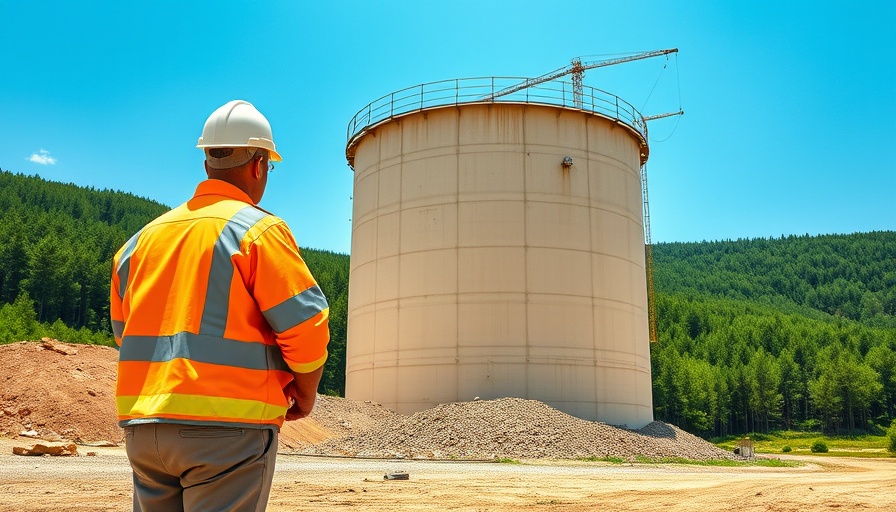
Revolutionary Battery: A Closer Look at Finland's Sand Innovation
Finland has recently unveiled the world’s largest sand battery, an innovative approach to thermal energy storage that offers sustainably-driven solutions for heating homes. While it may lack the flashy appearance of more traditional battery technologies like lithium-ion, the sand battery is poised to disrupt local energy systems effectively.
The Mechanics of the Sand Battery
What exactly is a sand battery? It functions by heating sand or crushed rock using electricity from renewable sources, allowing for heat retention and later usage. This unique mechanism utilizes 2,000 metric tons of pulverized soapstone—previously discarded as waste—housed in a 49-foot-wide insulated silo in Pornainen, Finland. It is anticipated that this battery can slash carbon emissions significantly, ultimately replacing oil heating that many Finnish towns, like Pornainen, currently depend upon.
Cost-Effectiveness of Emerging Tech
The economic implications of this technology are noteworthy. With the average cost of electricity in Finland sitting at a remarkably low €0.08 per kilowatt-hour, the operational expenses associated with running a sand battery stand to be incredibly favorable. Additionally, with only 10% to 15% heat loss during storage, the efficiency and effectiveness of this energy storage system are compelling alternatives to conventional heating methods.
Parallel Innovations in Thermal Storage
Finland’s sand battery is not an isolated innovation. Other startups across Europe, such as Scotland’s Sunamp and Electrified Thermal Solutions, are developing their own variations of thermal energy storage solutions. These include materials that capture heat in novel ways, emphasizing a growing trend in energy technology that prioritizes sustainable practices.
Future Predictions: The Impact of Sand Battery Technology
As the world focuses on reducing carbon footprints and enhancing energy efficiency, the sand battery could symbolize a larger shift towards innovative heating solutions globally. Tech-savvy individuals should keep a close eye on how this technology evolves, as it may lead to broader adoption across industries and consumer markets.
In conclusion, the development of the sand battery not only showcases Finland's commitment to environmental sustainability but might also pave the way for significant shifts in heating technology worldwide. For those intrigued by next-level technological advancements, keeping abreast of emerging innovations like this can only enhance our understanding of future energy landscapes. This spotlight on disruptive technologies can inspire a global shift towards energy efficiency and environmental responsibility.
 Add Row
Add Row  Add
Add 




 Add Row
Add Row  Add
Add 



Write A Comment